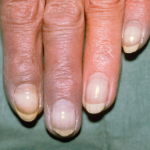WASHINGTON, D.C.—When she was diagnosed with rheumatoid arthritis (RA) at age 29, Eileen Davidson was working in Vancouver and had a 2-year-old son.
She soon learned that having the disease was just a part of the challenge, she said in a session at ACR Convergence. She became frustrated that people didn’t understand her diagnosis was serious and that it made life very difficult to navigate.
She began writing about her experience in a blog, which was not only an outlet but an outreach that connected her with hundreds of patients who said her writing has helped them with their illness. The blog also helped open doors and lead to participation in clinical research.
When patients with rheumatic conditions get involved in patient-facing organizations and in clinical research planning, they can derive benefits while also improving the quality of life of the broader rheumatology community and advancing knowledge in the field, patient advocates and academic research coordinators said in the session.
Ms. Davidson, who has been a member of the Arthritis Research Canada Patient Advisory Board since 2018 and is a writer with the patient organization Creaky Joints, said she realizes that getting involved with academic centers in their research work may not be for the faint of heart.
“Patient partners—individuals living with arthritis—play a crucial role in ensuring that studies are relevant, meaningful and truly patient centered,” she said. “But for those without an academic background, getting involved may seem daunting.”
As her experience in this work has grown, she has come to understand its profound importance, she said.
“Without diverse patient partners, arthritis research risks focusing on academic questions that may not be relevant to real patient lives,” she said. This involvement can ensure that research findings are applicable to a wide audience, can contribute to equitable health outcomes and lead to tailored interventions unique to various groups. They can also help improve trust and engagement of patients with the medical and research community.
She said that having patients at the table can help lead to protocols that are more realistic for patients and boost the odds of a successful research project.
Do’s & Don’ts
At the same time, she said, there are pitfalls for researchers to bear in mind. They should be aware of power imbalances that can make patients feel “like [their] input is undervalued or overlooked compared to professionals.”




